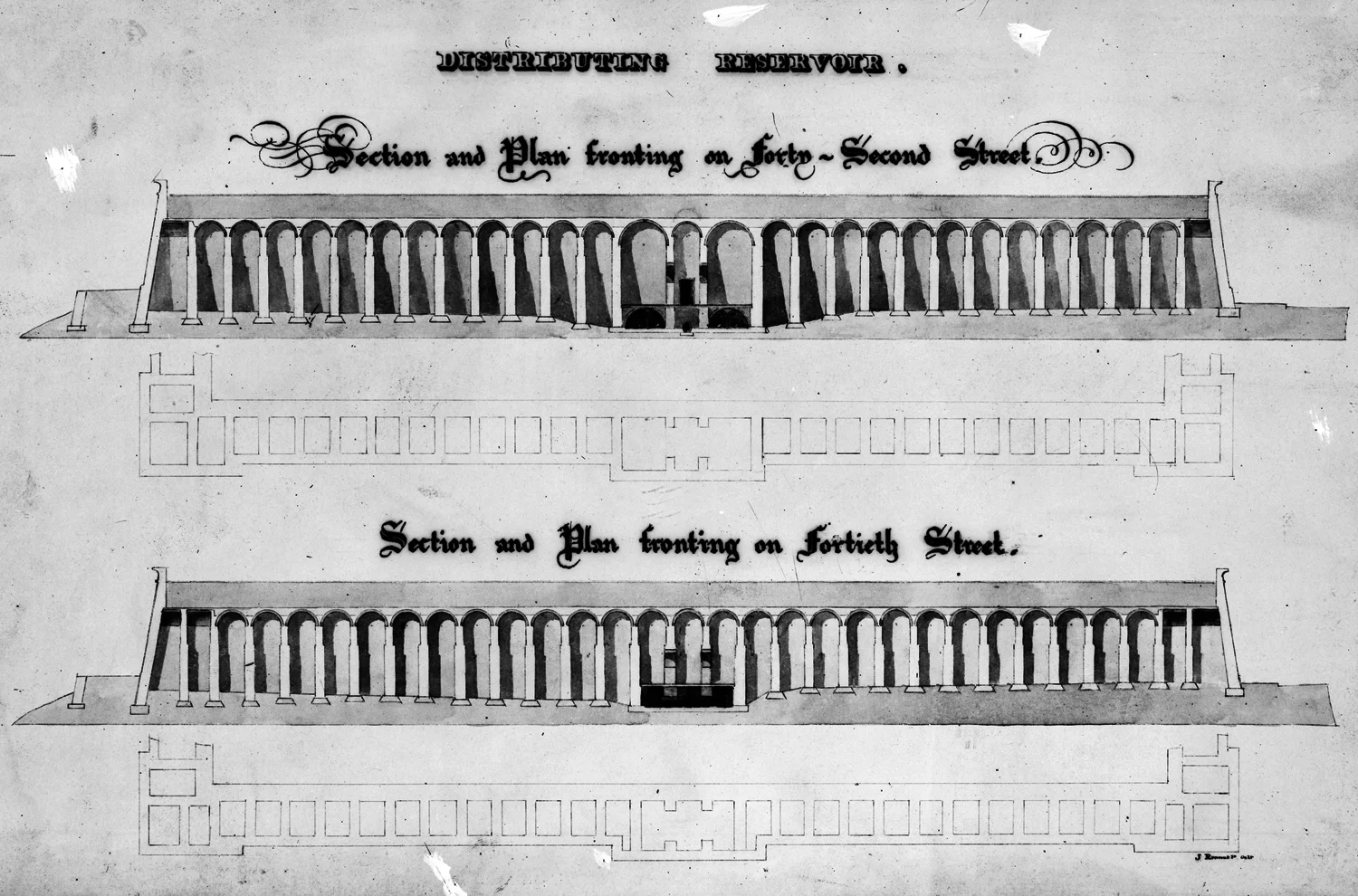James Renwick, Jr. (1818 — 1895)
Renwick, Jr., a native of New York City, is considered one of America’s most influential architects. He is well known for his design of Grace Church and St. Patrick’s Cathedral in New York City and of the Corcoran Gallery of Art and Smithsonian Institution in Washington, DC.
Oil portrait of James Renwick, Jr., 1929, Smithsonian Institution Archives
Renwick, Jr. was a child genius — he entered Columbia University at the age of the twelve and while there studied engineering. Upon graduating he worked as an assistant engineer on the New York State Croton Aqueduct water supply system (his engineering drawing published here). Though formally trained as an engineer, he became a self-taught architect and at the age of twenty-five won his first commission to build the Gothic-revival Grace Church in downtown Manhattan.
Architectural elevations and plans of a reservoir for the Croton Aqueduct, James Renwick, Jr., Library of Congress
Renwick, Jr. went on to design many buildings across the country including three prominent structures for Roosevelt Island (then known as Blackwell Island): the Smallpox Hospital, the Lighthouse (located on the northern tip of the island), and City Hospital. City Hospital, which was located directly north of the Smallpox Hospital, also fell into great disrepair. In 1994, despite being a landmark structure, the crumbling building was deemed unsafe and was demolished.
James Renwick, Jr. is a fellow of the American Institute of Architects.
Notable Renwick Buildings
Examine archival photographs and drawings of distinguished Renwick structures.
The Story of City Hospital
Learn about the demolished City Hospital also designed by James Renwick, Jr.




